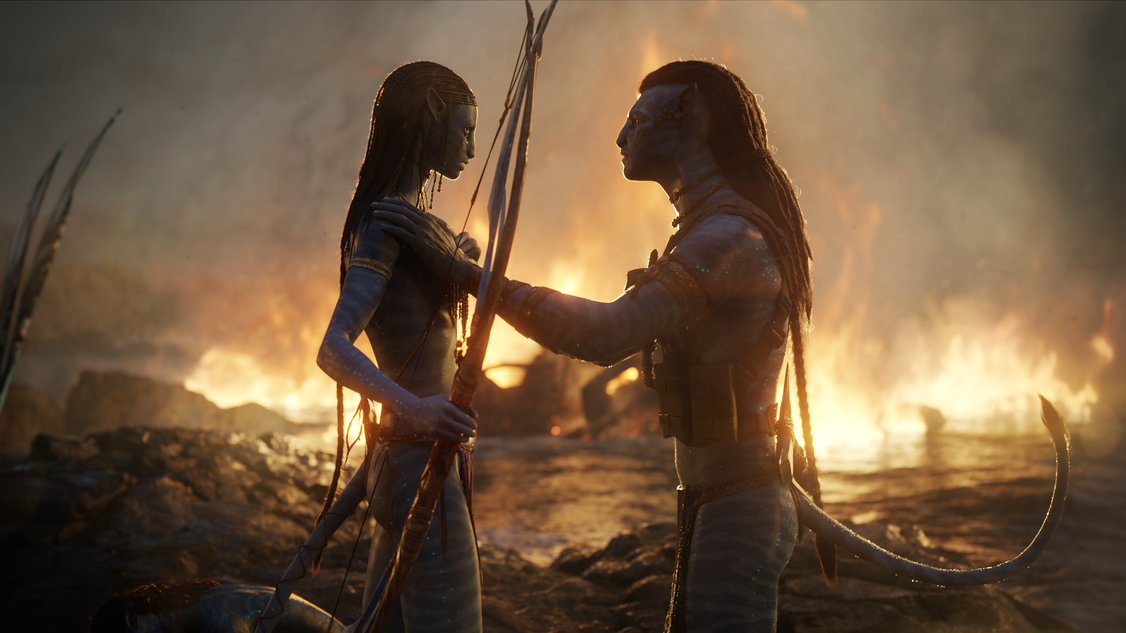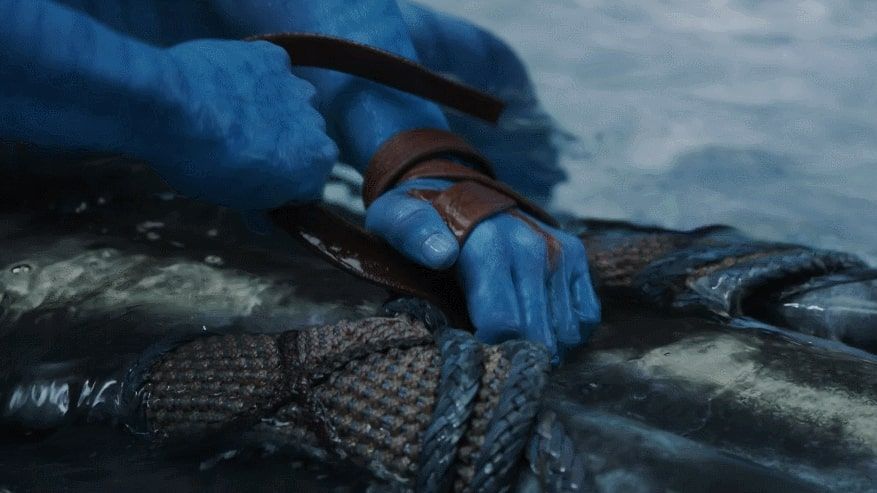Much has been made of the almost mind-boggling technical wizardry on display in Avatar: The Way of Waterand it’s hard to argue against director James Cameron’s decision to wait over a decade for the appropriate filmmaking technology to arrive before beginning work on his underwater sequel.
Daniel Barrett, Senior Animation Supervisor at Wētā FX, explained in an exclusive interview with TechRadar The method behind the magic of The Way of Water’s groundbreaking performance shot visuals, and we asked the veteran animator how he and his team pulled off a very specific shot – one that wowed the internet after it was included in the film’s first-ever trailer . Check it out via the tweet below.
This CGI is insane… pic.twitter.com/tbafxgyhUxMay 10, 2022
“It’s almost human,” reads a comment below the post. “It could just be a guy painted blue,” reads another. Best answer of all: “Pretty sure it’s not CGI. Cameron actually went to Pandora to film this one.”
For context, the footage in question shows Sam Worthington’s Jake Sully pulling the reins of a skimwing, the sea-dwelling version of the Metkayina clan’s mountain banshees, ridden by the Omaticaya. But how much – if anything – of what we see in the two-second clip is real and how much is computer-generated? Thankfully, Barrett has the answers.
“We practically filmed it,” he explains. “At the time there was talk about whether there would be this shot [used for] reference, or whether it would be in the movie. It looked really good what was made – but it was only the hand that was practical. So we had the challenge of connecting that hand mid-arm to a CG arm connected to a CG body sitting on a CG skimwing. And then we also had practical water, which then had to be connected to CG water. So it’s a mix. The hand and the water surround [the shot] is practical. The rest is digital.”
CG water? No wonder Cameron’s sequel had to surpass $2 billion to break even.
A slightly different challenge
Warning: Major spoilers follow for Avatar: The Way of Water
For Wētā FX – the New Zealand-based visual effects company founded in 1993 by The Lord of the Rings director Peter Jackson – Avatar: The Way of Water was the ultimate challenge. Animators like Barrett had to use all of their experience to break the incredibly high bar set by Cameron, whose extensive use of underwater performance capture techniques posed entirely new VFX obstacles.
Were there certain sequences that made Barrett and his team afraid of Toruk? “Technically, there were certain water shots that concerned me,” he tells us. “A lot of the boat shots were a problem just because we knew we were in a parallel workflow with the effects department. You can do your work, you hope the water surface stays as it is, you hope the wave phase stays as it was when you started the animation. But then you also know that this has to be simulated, and the simulation of the water now affects the surroundings of the boat. You can end up in a little loop. So many boat shots [were challenging].”

“There were also some big scenes,” Barrett continues. “The return of the Tulkun to the village – there was an awful lot going on in that footage. But for me personally it was one of the more difficult sequences – and I don’t want to be too rude [Neteyam’s] Death on the Rock. I found that really difficult. When I saw it in the cinema, I was somewhat immune to it. But the first 20 times were very, very difficult to watch.
“The performances are just so strong. Take Zoe [Saldaña] as an an example. It’s not even just the raw emotion that you see in her at first. Later, when Jake begs her to do what is necessary for the other children, her resolve is seen coming. The sadness never goes away, but determination comes, and it’s so subtle.
“Well for me [as an animator], it’s exciting to get to the point where you feel like you’ve found everything she’s done. Those more subtle shots really are the most satisfying moments.”
Avatar: The Way of Water is now in cinemas worldwide.





